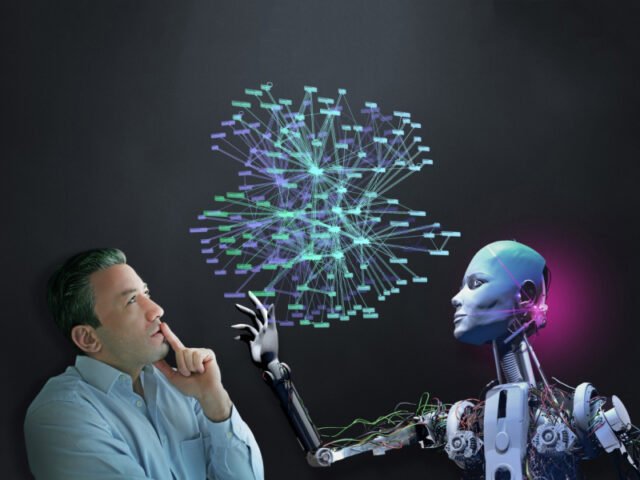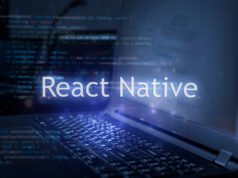Business practices are being updated and improved across industries. Discover what the future of business education holds.
Over the past ten years, I have worked as a skill trainer in the freelance industry. I think the biggest challenge students face is that they view training as something they “have to do”.
Let’s reflect on this moment. What brought us to this point? This answer consists of many parts, but I will attempt to sum it up as follows: Training is hard. In companies, it takes a long time to prepare courses, curriculum, and other information; track progress, and demonstrate ROI.
Furthermore, employees are reluctant to participate in training that does not meet their needs and takes time away from their work schedules.
In these very stressful jobs, the business plan becomes something that no one wants to be involved in – bad for any business. With great discipline, we can prevent organizations from becoming inefficient and inefficient.
It is my firm belief that we can and should make education more effective and less work for companies and employees. These days, artificial intelligence (AI) is being developed and improved in many business environments, and learning activities should not be left to chance. AI can improve learning methods and outcomes in large companies and small companies due to its ability to process and analyze large amounts of data quickly, improve decision-making, and personalized learning journeys.
So stay tuned: Here’s how artificial intelligence will revolutionize learning in the future.
Expanding training opportunities
The process of simplifying and optimizing learning processes in all industries is nearing completion. Learning technology is becoming more proactive (with suggested content and learning journeys) rather than simply reacting to what users do.
A more sophisticated training system is needed in some areas, and this is where augmented reality can help. In the future, employees will be able to immerse themselves in realistic scenarios virtually, practising safely and increasing their confidence. A manufacturing company, for instance, uses augmented reality to teach employees new technical skills with no work-related accidents.
The use of virtual assistant technology, such as Amazon Alexa, is another exciting development. We expect employees to engage with learning technology at a deeper level in the coming year, with their platforms able to remind them of learning tasks, among many other actions.
Optimization of learning recommendations
The truth is that training is rarely tailored to meet the needs of individuals, even though we all have different needs and tastes. Many companies, for example, offer access to a wide range of online course libraries, assuming that students will simply pick what is best for them.
A lot of options aren’t often available, but choosing is a good thing. In addition to hiring training manually or taking an open “buffet”, the AI-based system offers better, more personalized learning recommendations.
As an alternative to making multiple decisions, employees can set learning goals related to their careers. It would be so much easier if each task role came with a set of related abilities configured by the instructor. Using AI, an intelligent learning platform can map a student’s skills, identify strengths and weaknesses, and then quickly send recommendations on what the student still needs to master – taking guessing and the associated time out of the equation. Today, some technologies enable this, and these are capabilities we will see growing soon.
A fine-tuned learning process
To meet the needs of their employees, effective training professionals mix and match different types of training. In addition to formal and non-formal learning, synchronous and asynchronous opportunities, and on-the-job training, they often provide social education.
It should be possible to extend such precision with the aid of an AI system that understands the complexity of learning. Employees’ recent training activities or performance can be used to customize specific recommendations, such as talking with an industry expert, joining a training group, or watching videos on how to do it.
In the age of AI, we’re moving into a new paradigm: learning technology is at the heart of employee interaction, especially for remote and hybrid teams. Remote workers can connect with the right mentors and professionals using this technology, they can find professionals with similar interests, and they can find their place in the learning community.
Providing resources with high ratings
As a result of AI-based training recommendations, students may view the most popular content first. The problem with AI is twofold.
The first benefit is that it reduces decision fatigue. Corporate training has taught me that people will not prioritize learning if it is accompanied by a lot of tasks. Neither time nor inspiration is available.
As a result, learning systems can make highly personalized recommendations. Today, even in business training, we see a lack of personalization. For everyone, there are uniform modules, and quantity is often more important than quality.
Learners can evaluate each recommendation – be it a source or a suggestion to contact an expert. Instructors and managers appreciate this benefit since it ensures that learners receive highly rated recommendations using AI, especially when coping with large curriculum catalogs.
Enhance employee performance
When AI is incorporated into learning, employees will have more control over what, how, and when they learn.
Imagine having a dashboard where students can see everything related to their chosen learning goals, including skills, completion over time (and remaining areas), and recommended resources – and even participate in a gamified Q&A forum to clarify their questions. In traditional training environments, it is often difficult to determine where each student stands, so the individual learning path becomes obvious.
Employees take ownership of their training when all this information is readily available.
Using artificial intelligence to improve training
From standard, cookie-cutter training to personalized learning, artificial intelligence will be the biggest contributor. As a result, students can acquire the right resources at the right time to enhance their knowledge and skills, empower them to be more involved in their learning, and educate companies about the effectiveness of education. Gain immediate insight into the effectiveness of education.
Companies can now access personal training and other AI-based capabilities because costs and technical barriers are falling. Education will remain what employees need, but it will feel a little like a necessity – more enjoyable, rewarding, and conducive to greater engagement and business growth. Take responsibility.
Job: NLP ChatBot Developer
Responsibility:
- Develop, test, deploy, and maintain chatbots (virtual assistants) with teams and other developers
- Develop chat robot applications using artificial intelligence, natural language processing, and machine learning
- To meet changing needs, maintain and upgrade your chatbot platform
- Multi-platform integration of chatbot solutions
- Debugging, troubleshooting, and deploying chatbots in various channels
- As necessary, refactor or reengineer robot chat programs
- By using advanced technologies, chatbot users can be more effective
- Develop chatbots from beginning to end, from architecture to implementation
- Demonstration of Chabot and other activities
- Participate actively in future product development and act as an expert in various AI capabilities

Bolchaal is a platform of passionate writers who want to aspire others through the amazing ideas they have relating to our beloved homeland “Pakistan”.











